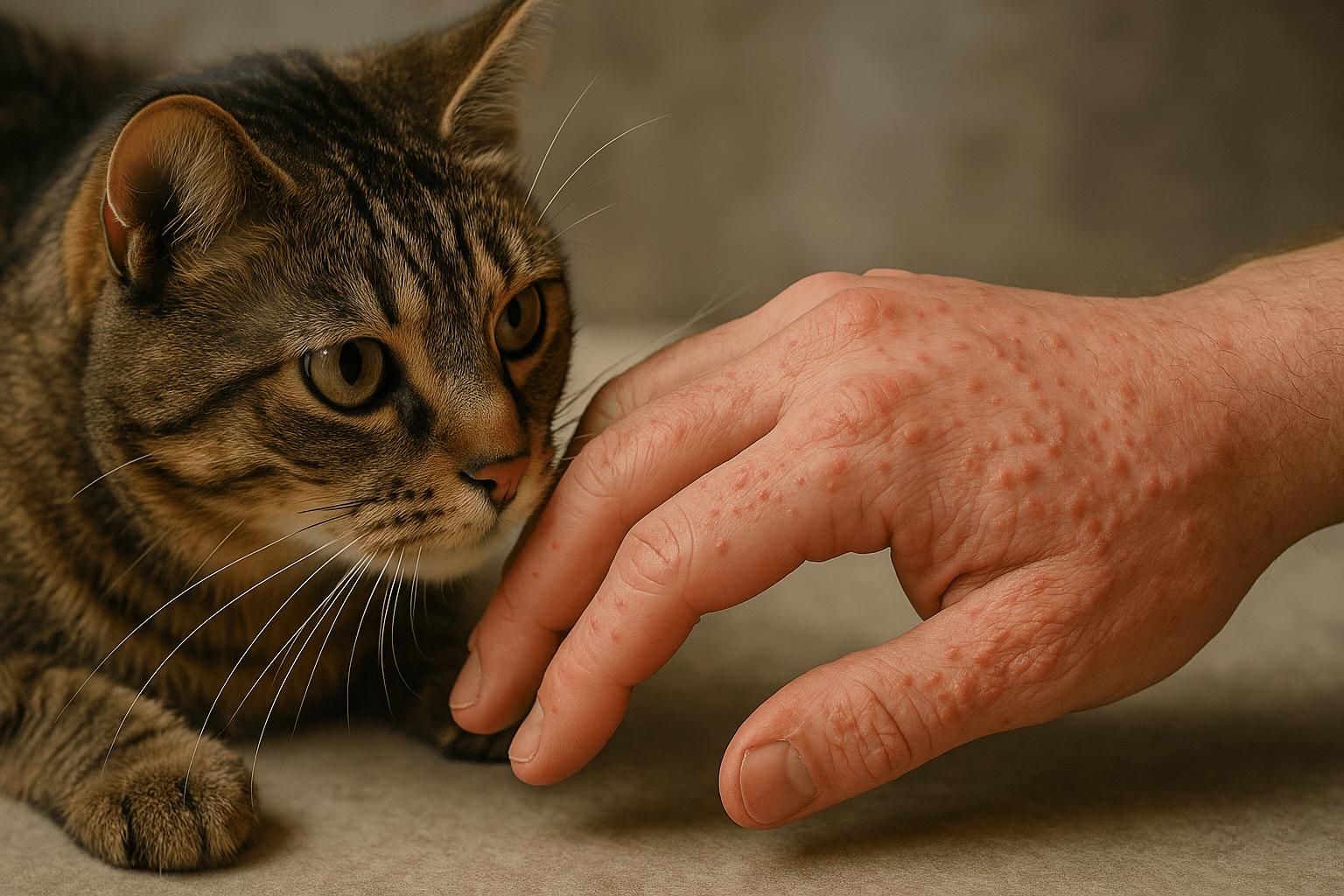The Graceful Arch: Understanding Why Cats Arch Their Backs
Cats are mysterious creatures, full of quirks and behaviors that often leave us fascinated. One such behavior is the iconic “arching back.” Whether it’s your fluffy feline stretching lazily in the morning or puffing up during a tense moment, this posture is as captivating as it is functional. But what does it mean when a cat arches its back? Is it a sign of affection, aggression, or something else entirely? In this blog post, we’ll unravel the mystery behind this common yet intriguing behavior, exploring the reasons cats do it, how to interpret it, and what you can learn from observing your furry friend.
Why Do Cats Arch Their Backs? Key Reasons Explained
Cats arch their backs for a variety of reasons, each tied to their physical and emotional state. Below are some of the most common explanations for this fascinating behavior:
Stretching and Flexibility
Cats are natural-born gymnasts, and their arched back often serves as a way to stretch their muscles. This helps them maintain flexibility and prepare for movement.Expressing Affection
When accompanied by purring and rubbing against you, an arched back can be a sign of love and trust. Your cat may be saying, “You’re my favorite human!”Defensive Posture
In moments of fear or aggression, cats arch their backs to appear larger and more intimidating. This is often paired with hissing or growling.Playfulness
Kittens and young cats frequently arch their backs during playtime. It’s their way of showing excitement and readiness to pounce.Marking Territory
An arched back can also indicate territorial behavior. Cats have scent glands along their back, and arching helps them mark their surroundings.
Understanding these reasons can help you better connect with your cat and respond appropriately to their needs. Remember, context matters—observe your cat’s body language as a whole to decode their message.
How to Interpret Your Cat’s Arched Back: A Closer Look
Deciphering your cat’s behavior requires paying attention to subtle cues beyond just the arched back. Here’s a breakdown of key factors to consider:
Tail Position
A high, relaxed tail while arching suggests happiness, while a puffed-up tail indicates fear or aggression.Ear Movement
Forward-facing ears typically mean curiosity or contentment, whereas flattened ears signal anxiety or anger.Vocalizations
Purring usually accompanies affectionate arching, while growls or hisses point to defensive behavior.Body Tension
A loose, fluid motion indicates playfulness, while stiffened muscles suggest tension or fear.Environment
Consider the setting—arched backs near strangers or other animals might reflect caution, while those at home could signify comfort.
By analyzing these elements, you’ll gain deeper insight into your cat’s emotions and intentions. Always approach your pet gently, especially when they seem stressed or scared.
Check this guide 👉Why Is My Cat Staring at Me? Best 7 Behavior Tips!
Check this guide 👉Why Does My Cat Sit on Me? Best 7 Behavior Tips!
Check this guide 👉Why Do Cats Chase Their Tails? Best 7 Behavior Tips!

Reasons for Arched Back | Associated Behaviors |
|---|---|
Stretching | Yawning, relaxed posture |
Showing Affection | Purring, rubbing |
Defensive Reaction | Hissing, growling |
Playfulness | Bouncing, chasing toys |
Marking Territory | Rubbing objects, sniffing |
Tips for Responding to Your Cat’s Arched Back
Knowing how to react when your cat arches its back can strengthen your bond and ensure their well-being. Consider the following tips:
Stay Calm During Aggression
If your cat arches its back defensively, avoid sudden movements. Give them space until they calm down.Engage in Play
For playful arching, grab a toy and encourage interactive games. This satisfies their hunting instincts and keeps them entertained.Offer Affection
When your cat arches toward you affectionately, reward them with gentle pets or treats to reinforce positive behavior.Monitor Health Issues
Frequent arching combined with pain signals (e.g., limping) may indicate underlying health problems. Consult a vet if unsure.Respect Boundaries
Some cats prefer not to be touched during certain displays. Learn your cat’s preferences to build mutual trust.
Responding thoughtfully to your cat’s signals fosters a harmonious relationship. Patience and observation are key!
Common Misconceptions About Cats Arching Their Backs
There are several myths surrounding why cats arch their backs. Let’s debunk some of the most prevalent ones:
Myth: It’s Always a Sign of Anger
Fact: While arching can signal aggression, it’s equally common in friendly or playful contexts.Myth: Only Stray Cats Arch Their Backs Defensively
Fact: Even indoor cats exhibit defensive arching when startled or threatened.Myth: Arching Means They’re Sick
Fact: Unless accompanied by other symptoms, arching alone rarely indicates illness.Myth: All Cats Arch Their Backs the Same Way
Fact: Each cat has unique body language influenced by personality and environment.Myth: Ignoring Arching Won’t Harm Them
Fact: Dismissing your cat’s signals can lead to stress or behavioral issues over time.
Separating fact from fiction ensures you provide the best care possible for your feline companion.
Fun Facts About Cats Arching Their Backs
Cats are full of surprises, and their arched-back behavior is no exception. Here are some fun facts that highlight the charm and complexity of this posture:
Ancient Origins
The arching behavior dates back to wild ancestors who used it to appear larger and ward off predators.Unique to Felines
While other animals may puff up or stretch, the combination of flexibility and purpose in cats is unmatched.Purr-fect Stretch
Cats often arch their backs after waking up, mimicking yoga poses like the “cat-cow stretch.”Scent Communication
When arching, cats release pheromones from glands near their tail to communicate with other felines.Photogenic Pose
The arched-back stance is one of the most iconic images associated with cats, often featured in art and media.
These fascinating tidbits remind us just how special our feline companions are. Every arch tells a tale rooted in instinct, communication, and survival.
How Arching Benefits Your Cat Physically
The act of arching isn’t just about emotional expression—it also has physical benefits for your cat. Let’s explore how this posture contributes to their overall well-being:
Improved Muscle Tone
Arching stretches and strengthens core muscles, keeping them agile and fit.Spinal Health
Regular arching helps maintain spinal flexibility, reducing the risk of injuries as they age.Better Circulation
The movement promotes blood flow, ensuring oxygen reaches vital organs efficiently.Digestive Aid
Stretching can help relieve bloating and improve digestion after meals.Energy Boost
A good arch-and-stretch routine wakes up their body, preparing them for activity.
This simple yet powerful motion plays a crucial role in maintaining your cat’s health. Encouraging regular stretching through play can enhance their quality of life.
The Role of Arching in Cat Social Dynamics
Cats may seem solitary, but their social interactions are rich and nuanced. Arching plays a significant role in how they relate to others. Below are examples of its impact on social dynamics:
Bonding with Humans
An affectionate arch signals trust, strengthening the human-cat bond.Hierarchy Among Cats
In multi-cat households, arching can establish dominance or submission within the group.Conflict Resolution
Instead of fighting, cats may arch to assert boundaries without escalating tension.Courtship Displays
During mating season, females sometimes arch to signal readiness to males.Territorial Claims
By marking areas while arching, cats create invisible maps of their domain.
Understanding these social cues enriches our appreciation of feline relationships. Whether interacting with humans or fellow cats, arching serves as a versatile tool for connection and communication.
Frequently Asked Questions About Cats Arching Their Backs
Is it normal for my cat to arch its back every day?
Yes, daily arching is normal, especially during stretching or greetings.
Should I worry if my cat arches its back and hides?
If hiding persists, consult a veterinarian to rule out stress or illness.
Can I train my cat to stop arching defensively?
You can reduce triggers but cannot eliminate instinctual responses entirely.
Does arching mean my cat wants attention?
Sometimes! Pair the behavior with other signs like meowing or rubbing.
Are kittens more prone to arching than adult cats?
Kittens tend to arch more during play, but adults do it too for various reasons.
Embracing the Mystery: Celebrating Your Cat’s Unique Personality
Understanding why cats arch their backs adds another layer to the joy of owning these enigmatic creatures. From playful antics to loving gestures, every arch tells a story about your cat’s world. By observing closely and responding empathetically, you deepen the connection between you and your feline friend. Remember, no two cats are alike—embrace their individuality and cherish the moments that make life with them so rewarding. After all, part of the magic lies in the mystery itself.
Canned Pumpkin for Cat Diarrhea: Best 7 Expert Tips! Natural remedy to firm stools, soothe upset bellies, and support gut health safely.
Can a Cat Give You Scabies? Best 7 Expert Tips! Discover the truth about feline mites, human skin risks, and how to protect yourself—without panic.
Cat Flea vs Human Flea: Best 7 Expert Tips! Discover the truth about bites, species, and how to eliminate infestations for good.
Weird Cat Behaviors: Best 7 Expert Tips! Discover why cats do strange things—and how to understand, not punish, their instincts for a happier home.





